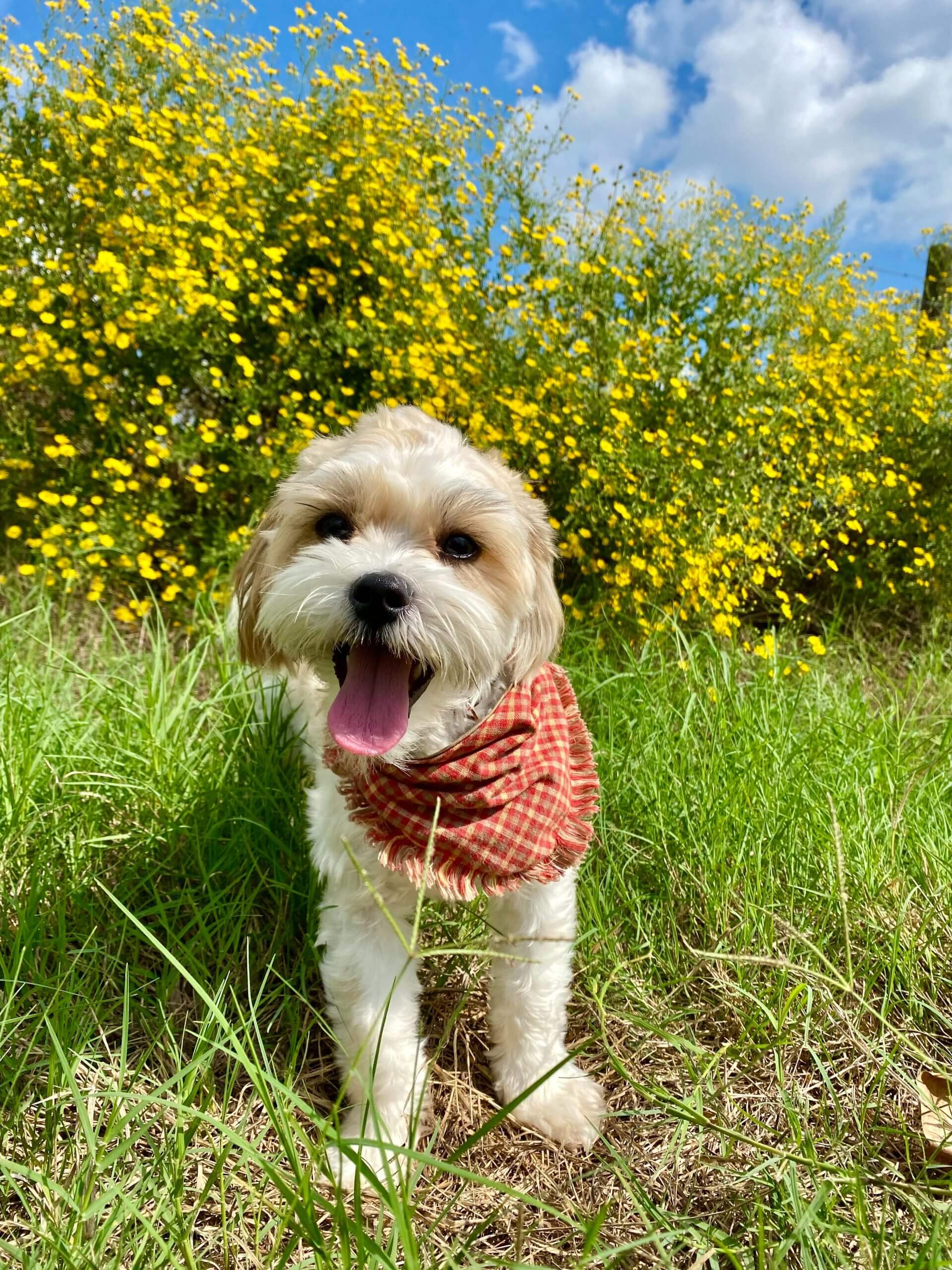The Eskipoo, a delightful hybrid breed, is the result of crossing an American Eskimo Dog with a Poodle. This breed has gained popularity for its adorable appearance, intelligence, and affectionate nature. In this comprehensive guide, we will explore the Eskipoo’s history, size, exercise needs, personality, health, care, feeding, coat colors, grooming, lifespan, and interactions with children and other pets.
History
The Eskipoo is a relatively new hybrid breed, gaining popularity in the last few decades as a result of the ongoing trend to create designer breeds. Combining the intelligence, playfulness, and hypoallergenic coat of the Poodle with the friendly, alert, and loving nature of the American Eskimo Dog, the Eskipoo has become an increasingly popular choice for families and individuals seeking a companion pet. Due to its hybrid status, the Eskipoo is not recognized by major kennel clubs, but it is recognized by the American Canine Hybrid Club (ACHC).
Size
The size of an Eskipoo varies depending on the size of the Poodle parent (Toy, Miniature, or Standard) and the individual genetics of each puppy. Generally, Eskipoo dogs weigh between 10 and 60 pounds and stand between 9 and 20 inches tall at the shoulder. Males tend to be slightly larger than females. Despite their varied size, Eskipoo dogs typically have a well-balanced, muscular build.
Exercise
Eskipoo dogs are energetic and intelligent, requiring regular physical and mental stimulation to keep them happy and healthy. Daily walks, play sessions, and mental challenges such as puzzle toys or obedience training are essential for their well-being. Due to their versatile nature, they can adapt well to various living environments, including apartments, as long as they receive adequate exercise and attention.
Personality
Eskipoo dogs are known for their friendly, affectionate, and social nature. They are quick to bond with their families and thrive on companionship. They are also intelligent and eager to please, making them relatively easy to train. Early socialization is vital for this breed to ensure a well-rounded and well-behaved adult dog. Eskipoo dogs tend to be good with children and other pets, making them an ideal family companion.
Health
As a hybrid breed, Eskipoo dogs may be prone to certain health issues found in their parent breeds, including hip dysplasia, patellar luxation, and eye disorders such as progressive retinal atrophy (PRA). Regular veterinary check-ups, a balanced diet, and proper exercise can help maintain your Eskipoo’s overall health and well-being. The average lifespan of an Eskipoo dog is 12 to 15 years.
Care
Caring for an Eskipoo involves providing a loving and structured environment that meets their physical and mental needs. Consistent training, socialization, and exercise are essential to keep this intelligent and devoted breed content. Establishing a routine for feeding, grooming, and exercise will help create a sense of security and stability for your pet.
Feeding
Feeding your Eskipoo a balanced and high-quality diet is essential to ensure they receive the necessary nutrients for optimal health. The amount of food required depends on the dog’s age, weight, and activity level. It is recommended to consult with your veterinarian to determine the appropriate diet and portion size for your individual dog.
Coat Color
Eskipoo dogs can exhibit a variety of coat colors, including white, cream, black, gray, and apricot. Their coat is typically wavy or curly, resembling the Poodle’s hypoallergenic coat, which makes them a popular choice for individuals with allergies. However, not all Eskipoo dogs inherit the hypoallergenic trait, so it’s essential to spend time with the dog before committing if allergies are a concern.
Grooming
The Eskipoo’s coat requires regular grooming to keep it clean and free of tangles. Brushing at least two to three times a week with a slicker brush or comb is recommended, while more frequent brushing may be necessary for dogs with a curlier coat. Monthly baths will help maintain a clean coat, but care should be taken not to over-bathe, as it can strip the coat of its natural oils. Regular nail trimming, ear cleaning, and dental care are also essential grooming tasks to ensure your dog’s overall health.
Lifespan
The Eskipoo’s average lifespan ranges from 12 to 15 years with proper care and attention. Ensuring your dog receives a well-balanced diet, regular exercise, and routine veterinary care can contribute to a longer, healthier life.
Interacting with Children
Eskipoo dogs are generally good with children due to their friendly and affectionate nature. They enjoy playing and being part of the family, making them an excellent addition to households with kids. However, as with any breed, it is essential to supervise interactions between the dog and young children. Teaching children how to safely approach and interact with the dog will help ensure a positive relationship between your Eskipoo and your family.
Interacting with Other Pets
Eskipoo dogs are usually sociable and get along well with other pets, especially when properly socialized from a young age. Early exposure to various animals and situations is essential to help your dog develop into a well-rounded and well-behaved adult. While they may occasionally exhibit a high prey drive, their friendly and adaptable nature generally allows them to coexist peacefully with other pets in the household.
Conclusion
The Eskipoo is a charming, intelligent, and affectionate hybrid breed that has captured the hearts of many dog enthusiasts. Their adaptability and friendly disposition make them a fantastic companion for families, singles, and seniors alike. By understanding their unique traits and providing a nurturing, structured environment, you can help your Eskipoo flourish and enjoy a long, fulfilling life by your side.

